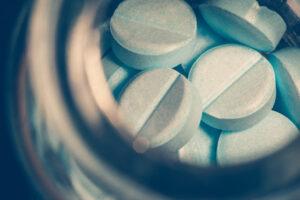 Getting a new drug off the ground takes a lot of work. You have to follow stringent (and very specific) FDA guidelines, exercise top-tier clean room standards (and GMP standards) to prevent contamination and reduce risk, and perform dozens of radiolabeled tests to ensure the drug is going to the right target within the human body. With so many hoops to jump through and factors to keep track of, it's a miracle we've produced the thousands of drugs already on the market!
Getting a new drug off the ground takes a lot of work. You have to follow stringent (and very specific) FDA guidelines, exercise top-tier clean room standards (and GMP standards) to prevent contamination and reduce risk, and perform dozens of radiolabeled tests to ensure the drug is going to the right target within the human body. With so many hoops to jump through and factors to keep track of, it's a miracle we've produced the thousands of drugs already on the market!
Say you've got a drug you think will revolutionize the lives of Americans, and you want to share it with them. You've already guaranteed your fume hoods have been checked for the year (part of good manufacturing practices means keeping your clean room up to date and held to the highest standards), and are ready for clinical trials.
There are four phases. 14C labeling is a common choice in drug trials, so let's pretend you went with carbon-14 as your radioisotope and get into the details of each phase.
Phase I
Phase I focuses primarily on safety and dosage. The studies are closely monitored (hence the use of 14C labeling) to gather information regarding just how a drug interacts with the human body: doses are adjusted based off animal data to figure out how much the body can tolerate and what its acute side effects are. Usually, 20 to 80 healthy volunteers or people with the disease or condition participate in Phase I. Approximately 70% of drugs move on to Phase II.
Phase II
Phase II is a longer study with a larger group -- generally up to several hundred that have the disease or condition will participate for several months to two years. The focus is on efficacy and side effects as the trial size isn't large enough to determine whether the drug will be beneficial. Around 33% of drugs move to Phase III.
Phase III
Your decision of 14C labeling continues to be used to monitor efficacy, but closer attention is paid to adverse reactions in this phase. Volunteer numbers range from 300 to several thousand and the study lasts from one to four years; because these studies are larger and longer in duration, the results are more likely to show long-term or rare side effects, offering more safety data than the previous phases while also demonstrating whether or not the drug will be beneficial to a specific population. Between 25% and 30% of drugs make it to Phase IV.
Phase IV
The largest and final phase, Phase IV involves several thousand participants and has been approved by FDA during the Post-Market Safety Monitoring.
